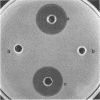Abstract
Leuconostoc mesenteroides UL5 was found to produce a bacteriocin, referred as mesenterocin 5, active against Listeria monocytogenes strains but with no effect on several useful lactic acid bacteria. The antimicrobial substance is a protein, since its activity was completely destroyed following protease (pronase) treatment. However, it was relatively heat stable (100 degrees C for 30 min) and partially denaturated by chloroform. The inhibitory effect of the bacteriocin on sensitive bacterial strains was determined by a critical-dilution micromethod. Mutants of L. mesenteroides UL5 which had lost the capacity to produce the bacteriocin were obtained. The mutant strain was stable and phenotypically identical to parental cells and remained resistant to the bacteriocin. Sodium dodecyl sulfate-polyacrylamide gel electrophoresis was used to detect bacteriocin activity corresponding to an apparent molecular mass of about 4.5 kDa.
Full text
PDF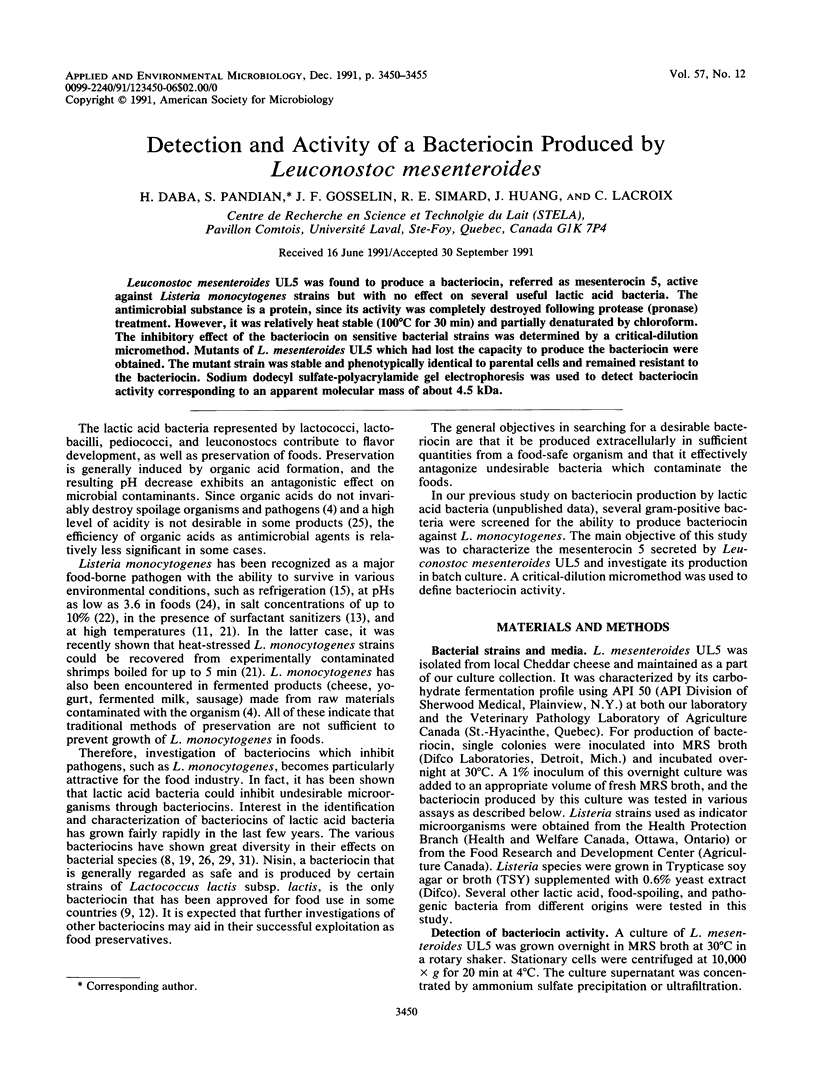
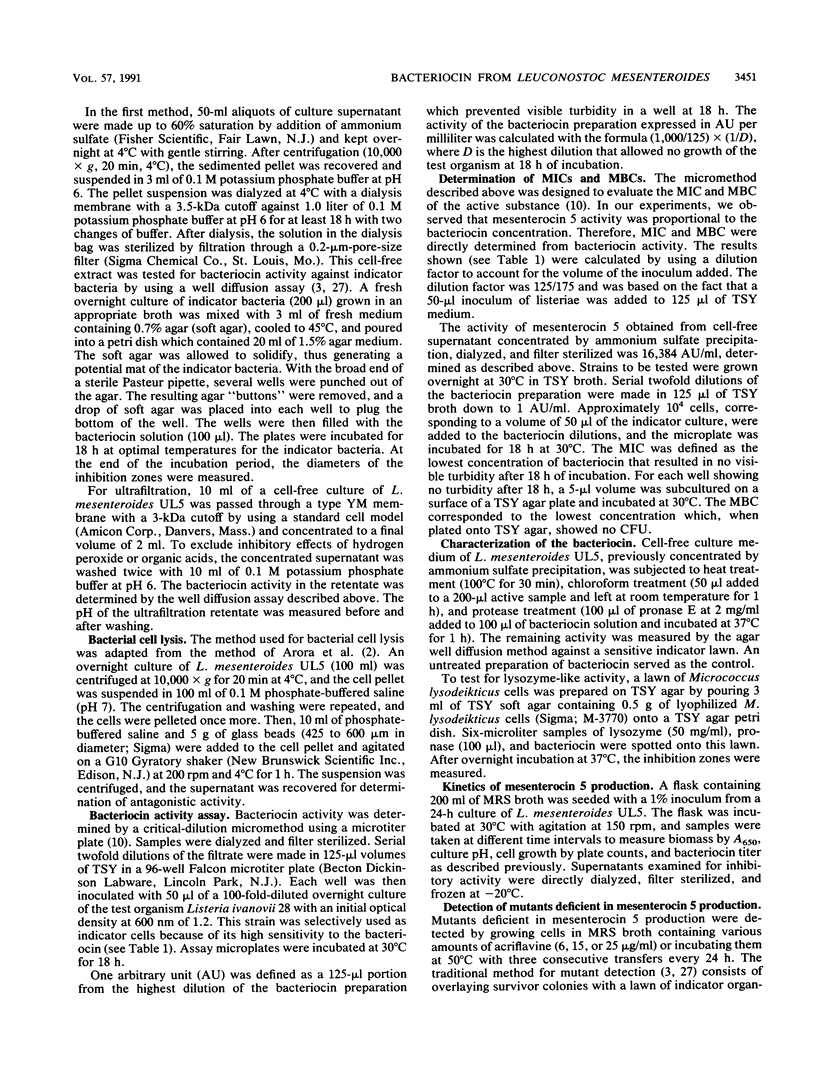
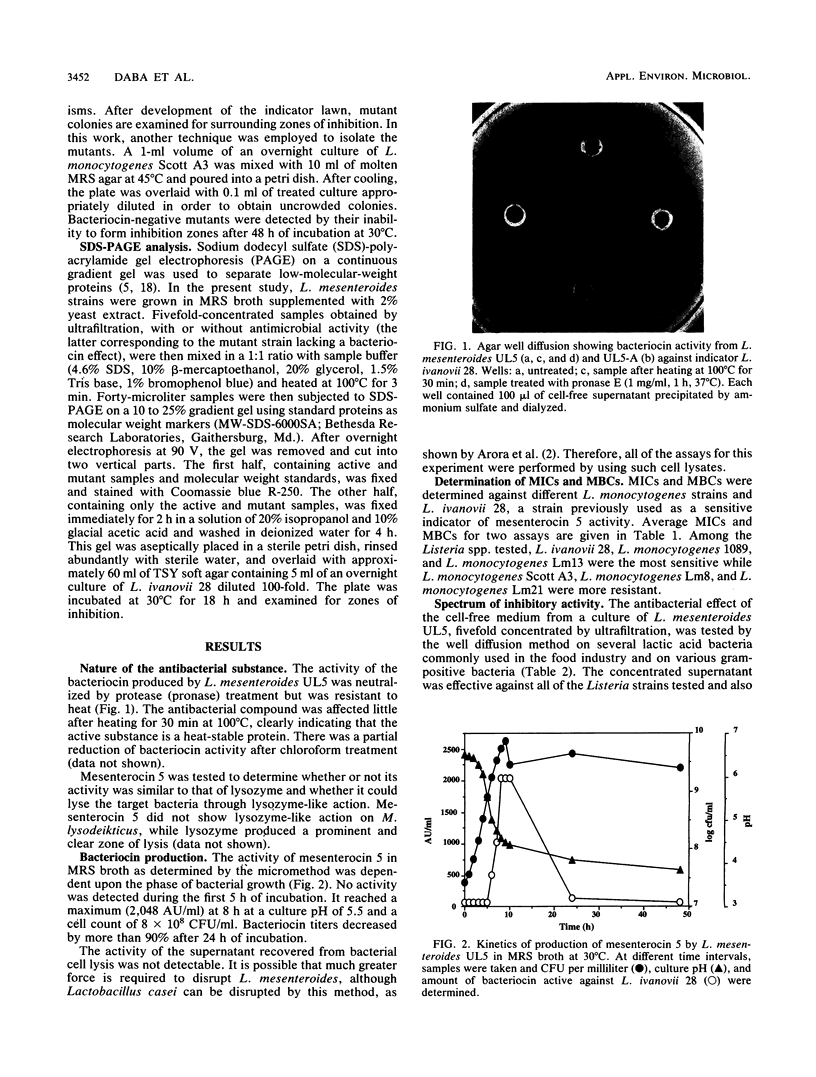
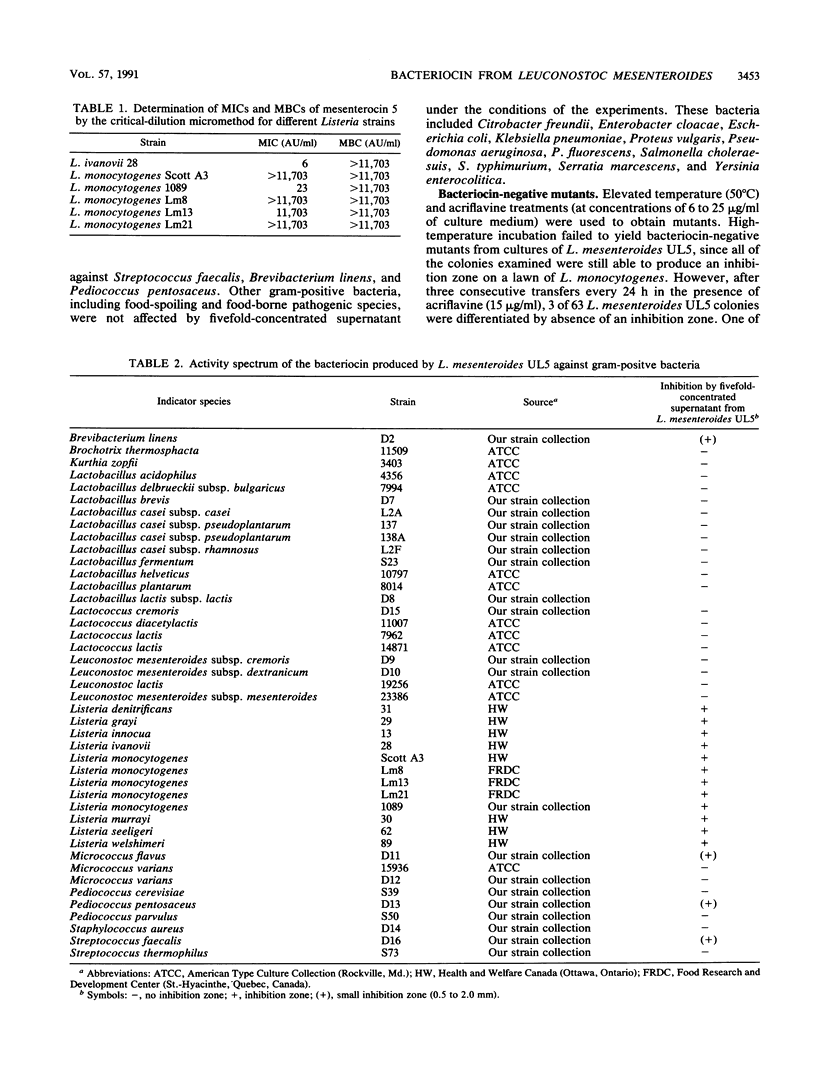
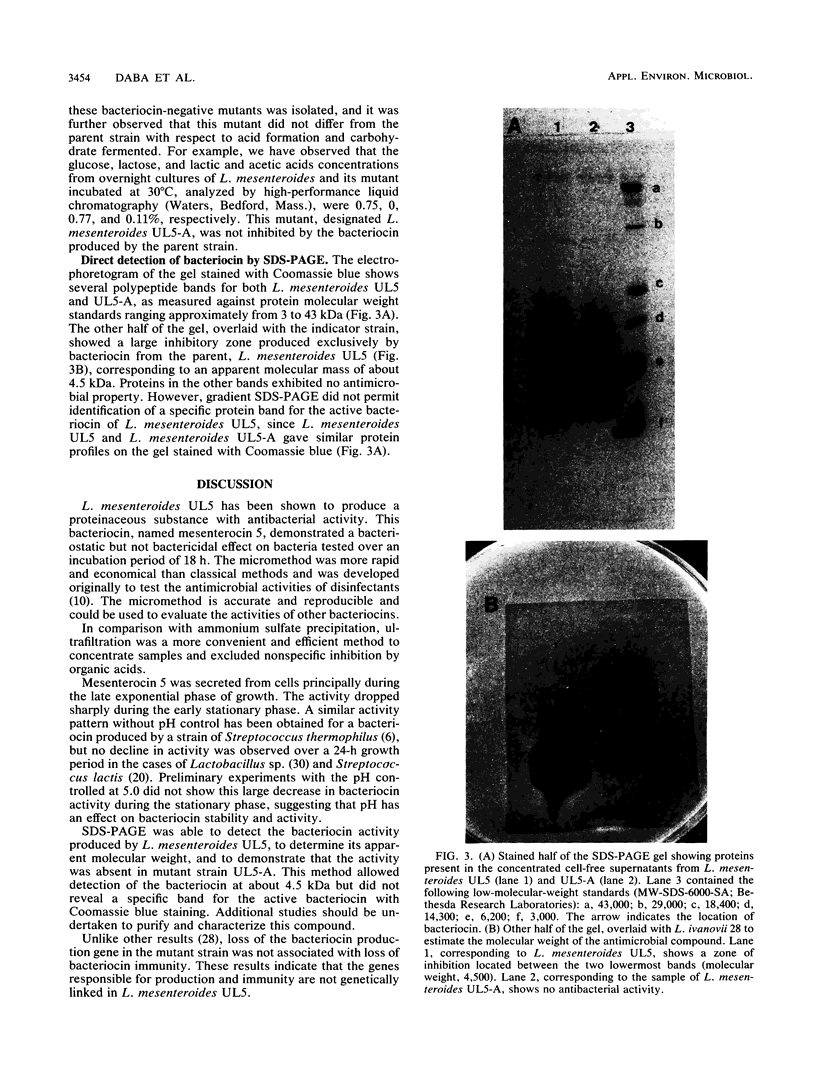
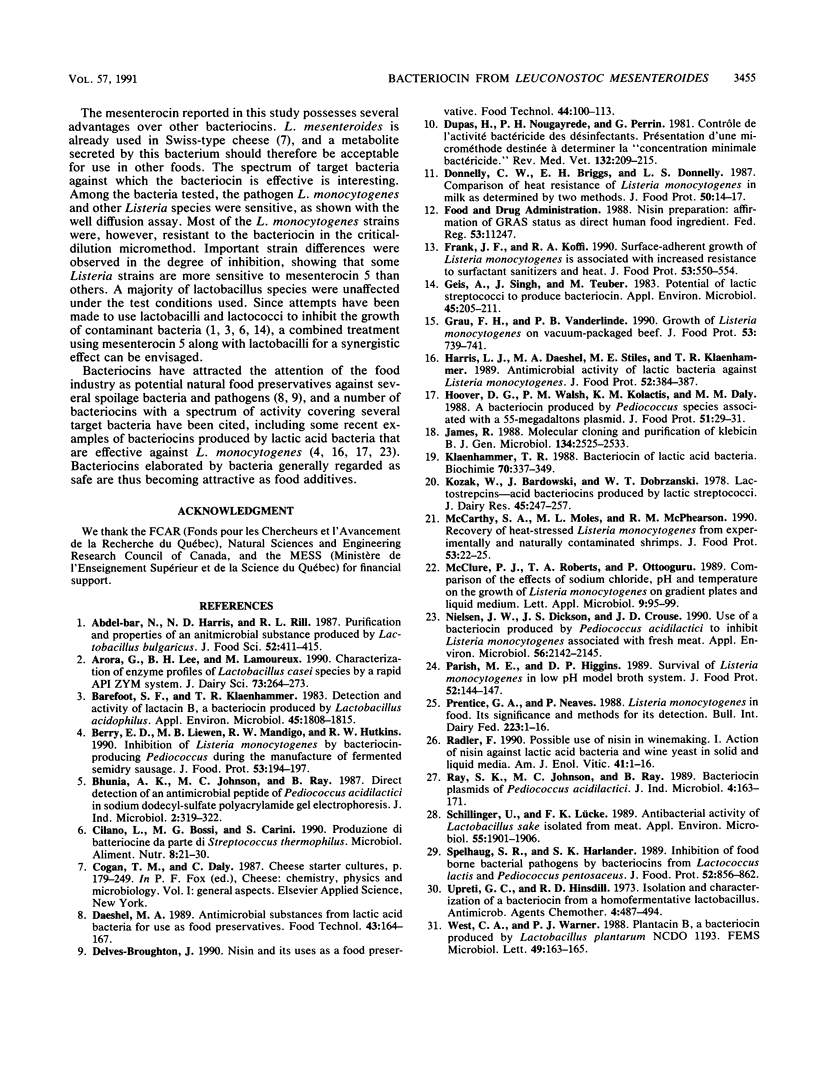
Images in this article
Selected References
These references are in PubMed. This may not be the complete list of references from this article.
- Barefoot S. F., Klaenhammer T. R. Detection and activity of lactacin B, a bacteriocin produced by Lactobacillus acidophilus. Appl Environ Microbiol. 1983 Jun;45(6):1808–1815. doi: 10.1128/aem.45.6.1808-1815.1983. [DOI] [PMC free article] [PubMed] [Google Scholar]
- Geis A., Singh J., Teuber M. Potential of lactic streptococci to produce bacteriocin. Appl Environ Microbiol. 1983 Jan;45(1):205–211. doi: 10.1128/aem.45.1.205-211.1983. [DOI] [PMC free article] [PubMed] [Google Scholar]
- James R. Molecular cloning and purification of klebicin B. J Gen Microbiol. 1988 Sep;134(9):2525–2533. doi: 10.1099/00221287-134-9-2525. [DOI] [PubMed] [Google Scholar]
- Klaenhammer T. R. Bacteriocins of lactic acid bacteria. Biochimie. 1988 Mar;70(3):337–349. doi: 10.1016/0300-9084(88)90206-4. [DOI] [PubMed] [Google Scholar]
- Kozak W., Bardowski J., Dobrzański W. T. Lactostrepcins--acid bacteriocins produced by lactic streptococci. J Dairy Res. 1978 Jun;45(2):247–257. doi: 10.1017/s0022029900016423. [DOI] [PubMed] [Google Scholar]
- Nielsen J. W., Dickson J. S., Crouse J. D. Use of a bacteriocin produced by Pediococcus acidilactici to inhibit Listeria monocytogenes associated with fresh meat. Appl Environ Microbiol. 1990 Jul;56(7):2142–2145. doi: 10.1128/aem.56.7.2142-2145.1990. [DOI] [PMC free article] [PubMed] [Google Scholar]
- Schillinger U., Lücke F. K. Antibacterial activity of Lactobacillus sake isolated from meat. Appl Environ Microbiol. 1989 Aug;55(8):1901–1906. doi: 10.1128/aem.55.8.1901-1906.1989. [DOI] [PMC free article] [PubMed] [Google Scholar]
- Upreti G. C., Hinsdill R. D. Isolation and characterization of a bacteriocin from a homofermentative Lactobacillus. Antimicrob Agents Chemother. 1973 Oct;4(4):487–494. doi: 10.1128/aac.4.4.487. [DOI] [PMC free article] [PubMed] [Google Scholar]



